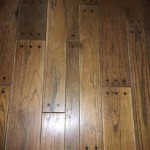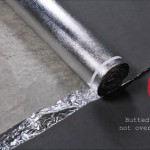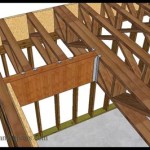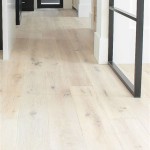Installing Bamboo Flooring Over Ceramic Tile: A Comprehensive Guide
Installing new flooring can significantly enhance the aesthetic appeal and value of a property. While removing existing flooring is often the preferred method, certain situations necessitate an alternative approach. Installing bamboo flooring over existing ceramic tile presents a viable option, offering a cost-effective and less disruptive way to update a space. However, careful preparation and adherence to specific guidelines are crucial for a successful and long-lasting installation.
This article provides a comprehensive guide to installing bamboo flooring over ceramic tile, covering essential considerations, preparation steps, installation techniques, and potential challenges. Understanding these aspects will enable both experienced and novice DIYers to achieve professional-looking results.
Key Considerations Before Installation
Before commencing the installation process, several critical factors must be evaluated to determine the suitability of installing bamboo flooring over ceramic tile. Ignoring these considerations can lead to structural issues, moisture problems, and compromised flooring integrity.
Tile Condition: The existing ceramic tile floor must be thoroughly inspected for any signs of damage. Cracks, loose tiles, or uneven surfaces can undermine the stability of the bamboo flooring and create weak points. Any compromised tiles must be repaired or replaced before proceeding. Small cracks can be filled with epoxy-based crack fillers. Loose tiles can be re-adhered using a suitable thin-set mortar. If the damage is extensive, it may be more practical to remove the existing tile altogether or consider a self-leveling compound.
Subfloor Stability: The subfloor beneath the ceramic tile must be structurally sound and capable of supporting the added weight of the bamboo flooring. Weak or unstable subfloors can cause the entire flooring system to flex and shift, leading to squeaking, cracking, and eventual failure. If the subfloor exhibits signs of weakness, reinforcement measures may be necessary, such as adding plywood sheeting or applying a self-leveling compound to create a stable base.
Moisture Levels: Bamboo flooring is particularly susceptible to moisture damage. Therefore, accurately assessing and controlling moisture levels is paramount. Both the ceramic tile and the subfloor must be thoroughly checked for moisture using a reliable moisture meter. Excessive moisture can lead to warping, cupping, and mold growth in the bamboo flooring. Any sources of moisture must be addressed before installation. A moisture barrier, such as a polyethylene film, is often recommended to prevent moisture migration from the subfloor.
Transition Heights: Installing bamboo flooring over ceramic tile will raise the floor height. This increase in height must be carefully considered in relation to adjacent flooring surfaces, doorways, and thresholds. Smooth transitions are essential to prevent tripping hazards and maintain accessibility. Transition strips, such as reducers or T-moldings, can be used to create seamless transitions between different floor heights. It is crucial to plan for these transitions during the initial planning stages.
Room Size and Layout: The size and layout of the room will influence the installation approach and the amount of bamboo flooring required. Measure the room accurately and calculate the square footage, adding an extra 5-10% for waste and cuts. Consider the direction of the bamboo flooring planks and how they will align with the room's features, such as windows, doorways, and focal points. A well-planned layout will enhance the visual appeal of the finished floor.
Preparation Steps for Successful Installation
Proper preparation is the foundation for a successful bamboo flooring installation over ceramic tile. Meticulous attention to detail during the preparation phase will minimize potential problems and ensure a durable and aesthetically pleasing floor.
Cleaning the Tile Surface: Thoroughly clean the ceramic tile surface to remove any dirt, dust, grease, wax, or other contaminants. Use a suitable tile cleaner and a scrub brush to loosen stubborn stains and residue. Rinse the surface thoroughly with clean water and allow it to dry completely. A clean surface will promote better adhesion of the underlayment or adhesive.
Leveling Imperfections: Minor imperfections in the tile surface, such as grout lines and subtle dips, can be addressed using a self-leveling compound. Apply the compound according to the manufacturer's instructions, ensuring that it fills in any low spots and creates a smooth, even surface. Allow the compound to dry completely before proceeding. For larger variations in height, feather edging may be necessary to blend the leveler into the existing tile.
Choosing the Right Underlayment: An underlayment provides a cushioning layer between the ceramic tile and the bamboo flooring, improving sound insulation, reducing impact noise, and providing added comfort underfoot. Select an underlayment specifically designed for use with bamboo flooring over hard surfaces. Consider the desired level of sound reduction and moisture resistance when making your choice. The underlayment should be rolled out and taped securely to the ceramic tile surface, ensuring that the seams are tightly butted together.
Acclimatizing the Bamboo Flooring: Bamboo flooring is a natural material that expands and contracts in response to changes in temperature and humidity. To prevent warping or buckling after installation, it is essential to acclimatize the bamboo flooring to the room's environment. Store the bamboo flooring planks in the room where they will be installed for at least 48 to 72 hours before installation. This allows the bamboo to adjust to the room's temperature and humidity, minimizing dimensional changes after installation.
Gathering Necessary Tools and Materials: Before starting the installation, gather all the necessary tools and materials. This includes a moisture meter, a level, a measuring tape, a saw (circular or miter saw), a tapping block, a rubber mallet, spacers, a straight edge, safety glasses, and any adhesive recommended by the bamboo flooring manufacturer. Having all the tools and materials readily available will streamline the installation process and minimize interruptions.
Installation Techniques and Potential Challenges
The installation technique will vary depending on the type of bamboo flooring being used and the manufacturer's recommendations. Engineered bamboo flooring is commonly installed using a floating method, while solid bamboo flooring may be glued down or nailed to the subfloor. Understanding the nuances of each method is crucial for a successful installation.
Floating Installation Method: With the floating method, the bamboo flooring planks are interlocked together, creating a single, continuous surface that is not directly attached to the subfloor. This method is relatively easy and quick, making it a popular choice for DIY projects. Begin by laying the first row of planks along a straight wall, using spacers to maintain a consistent expansion gap. Interlock the planks together using the tongue-and-groove system. Use a tapping block and rubber mallet to gently tap the planks together, ensuring a tight and seamless fit. Continue laying the planks row by row, staggering the end joints for a more visually appealing and structurally sound floor. Cut the last row of planks to fit, leaving an expansion gap along the opposite wall.
Glued-Down Installation Method: The glued-down method involves applying adhesive to the ceramic tile surface and then pressing the bamboo flooring planks into the adhesive. This method provides a more secure and stable installation, particularly in areas with high traffic or moisture. Apply the adhesive according to the manufacturer's instructions, using a trowel with the recommended notch size. Position the bamboo flooring planks carefully and press them firmly into the adhesive. Use a roller to ensure complete contact between the planks and the adhesive. Wipe away any excess adhesive immediately. Allow the adhesive to cure completely before allowing traffic on the floor.
Potential Challenges: Installing bamboo flooring over ceramic tile can present several challenges. Uneven surfaces, moisture issues, and complex room layouts can all complicate the installation process. Addressing these challenges proactively is essential for achieving a successful outcome. Irregularities in the tile surface can be mitigated using a self-leveling compound or by adding shims under the underlayment. Moisture problems must be addressed before installation to prevent damage to the bamboo flooring. Complex room layouts may require more intricate cuts and careful planning to ensure a seamless and visually appealing floor.
Expansion Gaps: Maintaining adequate expansion gaps around the perimeter of the room and around any fixed objects, such as pipes or columns, is crucial for preventing buckling or warping. Bamboo flooring expands and contracts with changes in temperature and humidity, and these expansion gaps allow the floor to move freely without putting stress on the flooring material. Use spacers during installation to maintain a consistent expansion gap. After installation, cover the expansion gaps with baseboards or trim.
Cutting Bamboo Flooring: Bamboo flooring can be cut using a variety of saws, including circular saws, miter saws, and jig saws. Use a fine-tooth blade to minimize splintering and chipping. When making cuts, support the bamboo flooring planks properly to prevent them from cracking or breaking. Wear safety glasses to protect your eyes from flying debris.
Addressing Squeaks: Even with proper preparation and installation, squeaks can sometimes develop in the bamboo flooring. Squeaks are usually caused by friction between the bamboo flooring and the subfloor or between the bamboo flooring planks themselves. To address squeaks, try injecting a small amount of powdered graphite or talcum powder into the seams between the planks. If the squeak persists, it may be necessary to remove the affected planks and re-install them using a different adhesive or underlayment.
By carefully considering the factors outlined in this article and diligently following the recommended preparation and installation steps, individuals can successfully install bamboo flooring over ceramic tile, transforming their spaces with a durable and aesthetically pleasing flooring solution. However, if significant challenges arise or confidence is lacking, professional installation services should be considered.

How To Install Bamboo Flooring Floated Diy Method

Glue Down Installation Bamboo Hardwood Floor Over Concrete Slab Wood Sub

Install Hardwood Flooring Over Tile Floor Double Glue Down Method

How To Install Bamboo Flooring Floated Diy Method

Can I Install Bamboo Flooring In My Bathroom The Company

Can I Install Bamboo Flooring In My Bathroom The Company

How To Fit Bamboo Flooring Onto Chipboard The Company

This Is My Shaw Bamboo Laminate Review After I Installed Some In A Room M Glad It Wasn T Whole Ho Flooring Engineered Wood Floors

How To Fit Bamboo Flooring Onto Existing Wooden Floor Boards The Company

5 Challenges Installers May Face With Bamboo Flooring
Related Posts








